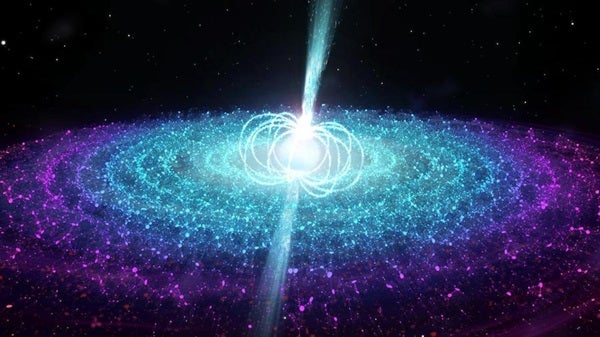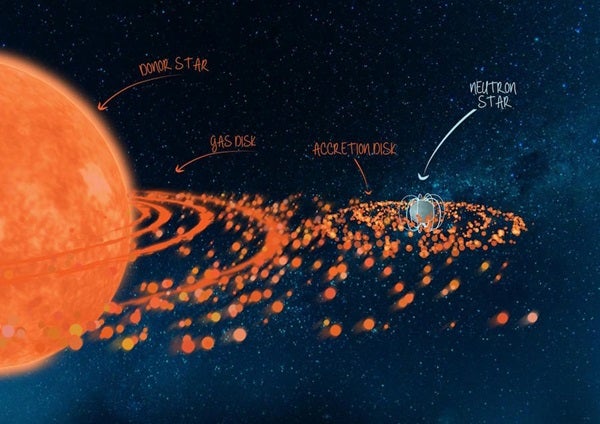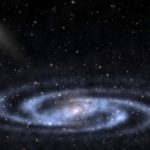Key Takeaways:
- Astronomers observed a jet shooting out from a neutron star with an extremely strong magnetic field
- They are incredibly small and have very strong gravity.
- The neutron star in this study, called SW J0243, is stealing matter from a companion star.
- Interaction between the disk and the magnetic field likely creates the jets, which shoot out matter at nearly the speed of light.
- This discovery challenges our understanding of jet formation around neutron stars and opens new areas of research.

For the first time, astronomers have witnessed a fast-moving jet of material shooting outward from a neutron star with an extremely powerful magnetic field — one that is some 10 trillion times stronger than the Sun’s. The surprising discovery not only caught researchers off guard, but is also forcing them to fundamentally rethink their current theories regarding how jets form throughout the cosmos.
Astronomers have long been fascinated with neutron stars, which are the superdense cores left behind after a massive star explodes in spectacular fashion. These extreme stars are so densely packed that our Sun, which is approximately 850,000 miles wide, would only be about 10 miles wide if it were compressed to the density of a neutron star. With so much matter packed into such a tiny space, neutron stars have intense gravitational pulls near their surfaces that are only rivaled by black holes, which can lead to some pretty interesting effects.
Researchers observed and analyze Swift J0243.6+6124 (SW J0243), an unusual neutron star, using the Karl G. Jansky Very Large Array (VLA) radio telescope in a study that was published in the journal Nature. The unexpected and outstanding outburst that was captured by NASA’s Swift space telescope led to the initial discovery of this object.
The researchers concluded that the neutron star is probably stealing material from a massive, nearby companion star and condensing that material into a swirling disk known as an accretion disk by observing how the object’s X-ray and radio emissions changed after the outburst. Strong jets are created at the neutron star’s poles as a result of interactions between the accretion disk and its magnetic field lines, releasing matter out at almost the speed of light.

The fact that a neutron star is home to such jets is not a surprise in and of itself. Lead author Jakob van den Eijnden of the University of Amsterdam said in a press release, “We’ve seen jets coming from all types of neutron stars that are pulling material from their companions. “[But] never before have we seen a jet coming from a neutron star with a very strong magnetic field.”
Current theory suggests that neutron stars like SW J0243 with very strong magnetic fields shouldn’t be able to produce these kinds of jets. Our working theories, supported by decades of observations, predict that the formation of jets around neutron stars should be blocked by extremely strong magnetic fields. But according to van den Eijnden, “Our clear discovery of a jet in SW J0243 disproves that longstanding idea.”
However, as the authors note in their paper, there is still much more work to be done. They need to gather more observational evidence to confirm the jets’ existence before ruling out any other plausible explanation for the apparent jets, which could be anything from strong stellar winds to shock waves within the accretion disk.
But according to co-author Nathalie Degenaar, “this discovery not only means we have to revise our ideas about jets from such systems, but also opens up exciting new areas of research,” if their findings hold up (or more jets are observed around other strongly magnetized neutron stars).


